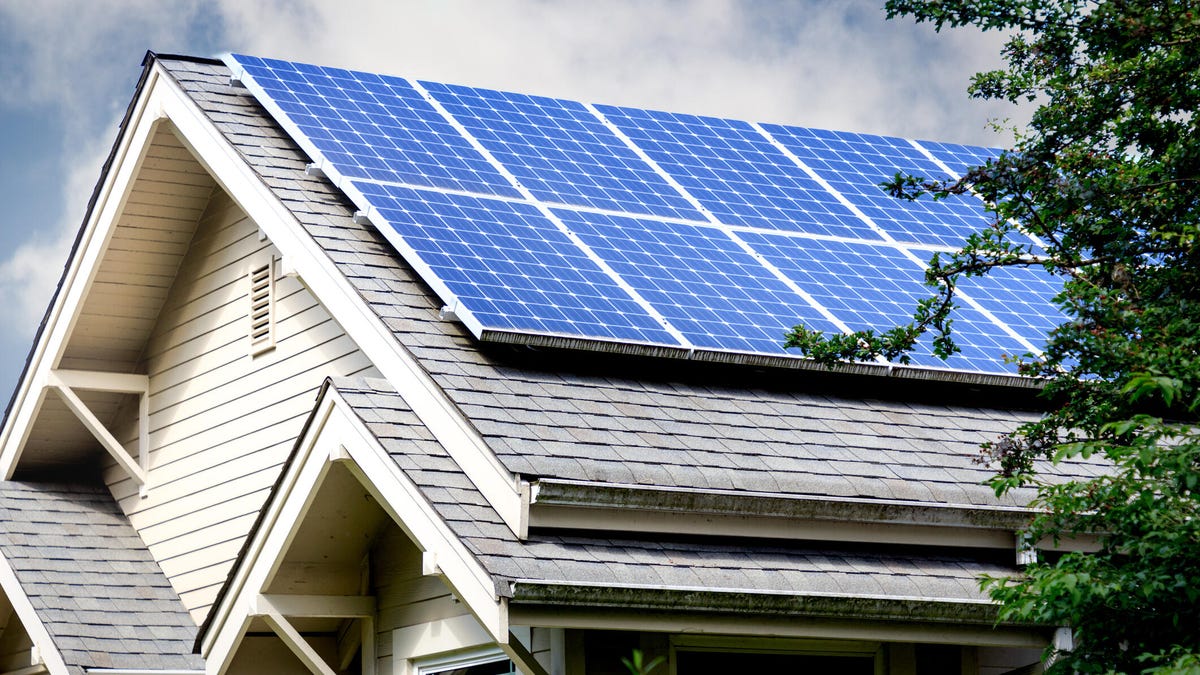Why the US Added a Record Amount of Solar Power in 2023
More than half of the added grid capacity in 2023 was solar energy -- in large part thanks to the Inflation Reduction Act's tax incentives.

More than half of the electricity generating capacity added to the US grid in 2023 was solar power, according to a new report released by the Solar Energy Industries Association and Wood Mackenzie. This is the first time in 80 years that renewable energy sources accounted for over half of the additions to grid capacity in the United States.
The solar industry attributed the growth to the significant incentives included in the federal Inflation Reduction Act. This was the first full year since the passing of the IRA, which carved out nearly $369 billion in federal funding for investment in manufacturing and production of clean energy technologies, as well as a major tax credit for the installation of rooftop solar panel systems.
The year wrought challenges for the solar industry as well. California's solar market was crushed (contracting 75% by some estimates) under a new, more restrictive net metering policy. High interest rates made financing solar panel systems hard for residents across the US, and reports circulated late in the year that some solar companies were teetering on the edge of bankruptcy.
Can solar panels save you money?
Interested in understanding the impact solar can have on your home? Enter some basic information below, and we’ll instantly provide a free estimate of your energy savings.
With solar payback periods potentially increasing in key states, it's uncertain whether rooftop installation will remain popular -- or if solar leases, power purchase agreements or community solar programs will grow in their stead.
A sunny forecast for solar power?
According to the SEIA and Wood Mackenzie, solar capacity is expected to be able to power 100 million homes by 2034.
"If we stay the course with our federal clean energy policies, total solar deployment will quadruple over the next 10 years," said SEIA president and CEO Abigail Ross Hopper.
The solar industry also remains wary about the outcome of this year's elections. A change in administration in Washington could dramatically shift the federal government's favorable view toward renewable energy.
State solar adoption in 2023
More than half of the US states have more than a gigawatt of installed solar capacity, but there were clear shifts in how well some states supported solar installations in 2023.
Texas installed the most solar generation throughout the year, adding 6.5 GW of solar capacity to its grid. It was the second year in a row that Texas invested more in solar energy than California did, and this trend will likely continue as California's net metering changes tank the solar industry in the state.
Colorado and Ohio both reappeared in the SEIA and Wood Mackenzie list of the top 10 states with the most solar installations for the year -- the first time either state has made the list in a decade. Wisconsin appeared in the top 10 for the first time ever.
How the Inflation Reduction Act can help you go solar
The residential clean energy credit expanded and extended by the Inflation Reduction Act helps make solar panel systems more affordable.
The tax credit covers 30% of the cost of solar panel installation, as well as certain other clean energy additions made to existing homes. The credit is claimed against your taxable income when tax season rolls around.
The federal tax rebate stacks additively with any state-level tax credits, which can significantly ease the financial burden of switching to solar energy in some states.
Claiming the federal credit is relatively straightforward. First, go through with your solar installation. The following year, when you're filing your taxes for the year that the solar array was installed within, you're going to fill out IRS Form 5695, Residential Energy Credits. When your taxes are filed, the credit will reduce the amount you owe for that year.
Other clean energy incentives are available through the Inflation Reduction Act, including an energy efficient home improvement credit that covers energy-efficient furnaces, air conditioners, heat pumps, heat pump water heaters, insulation and more.



